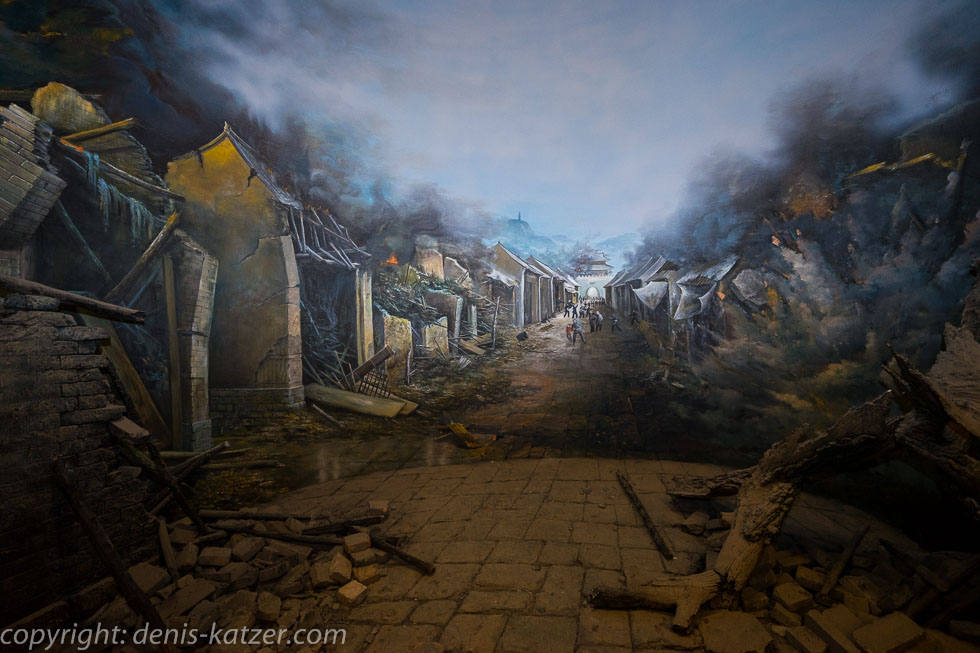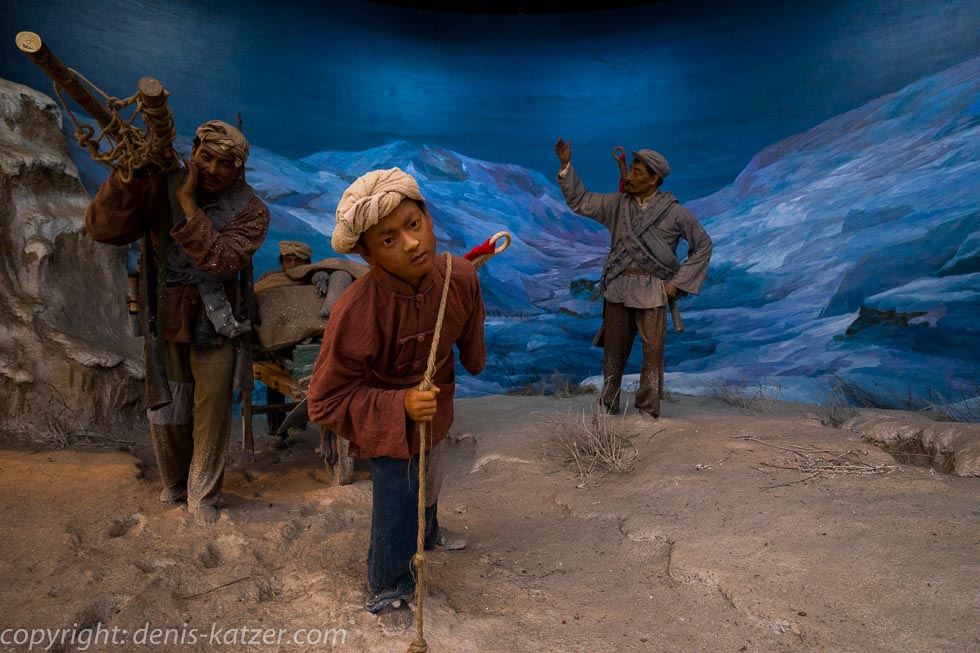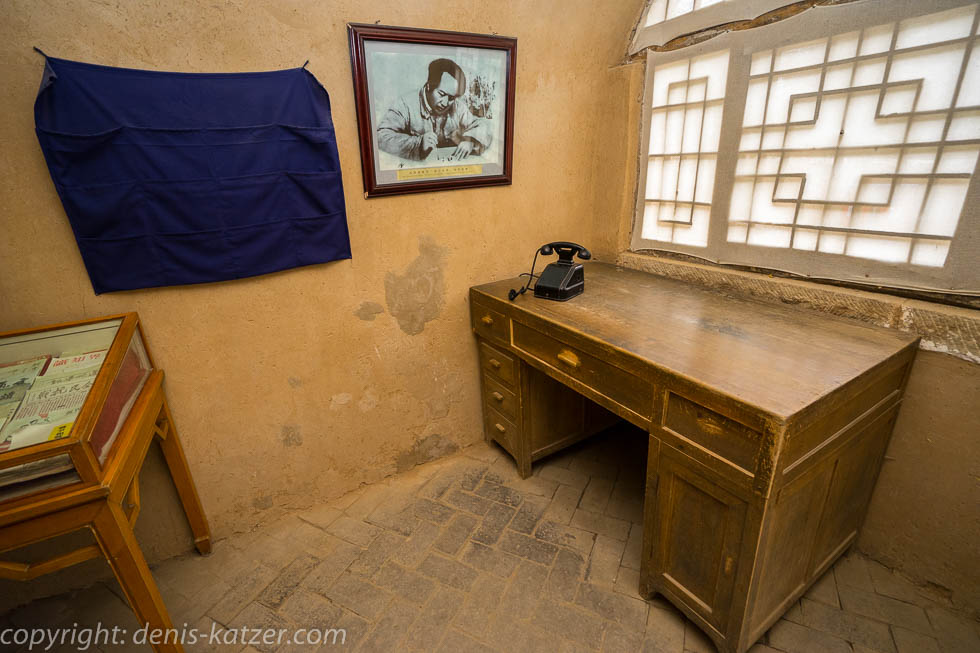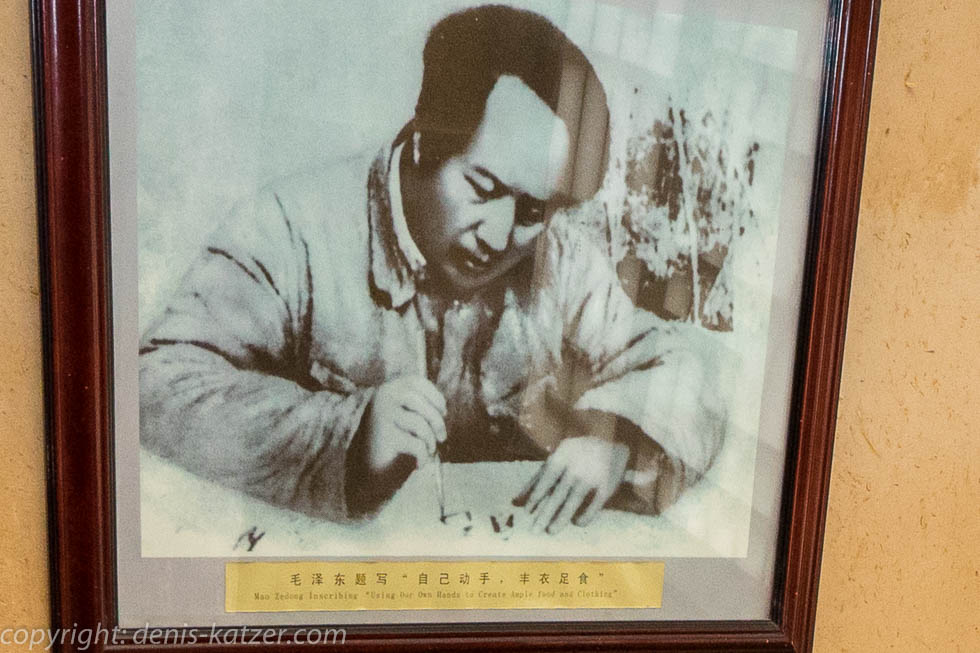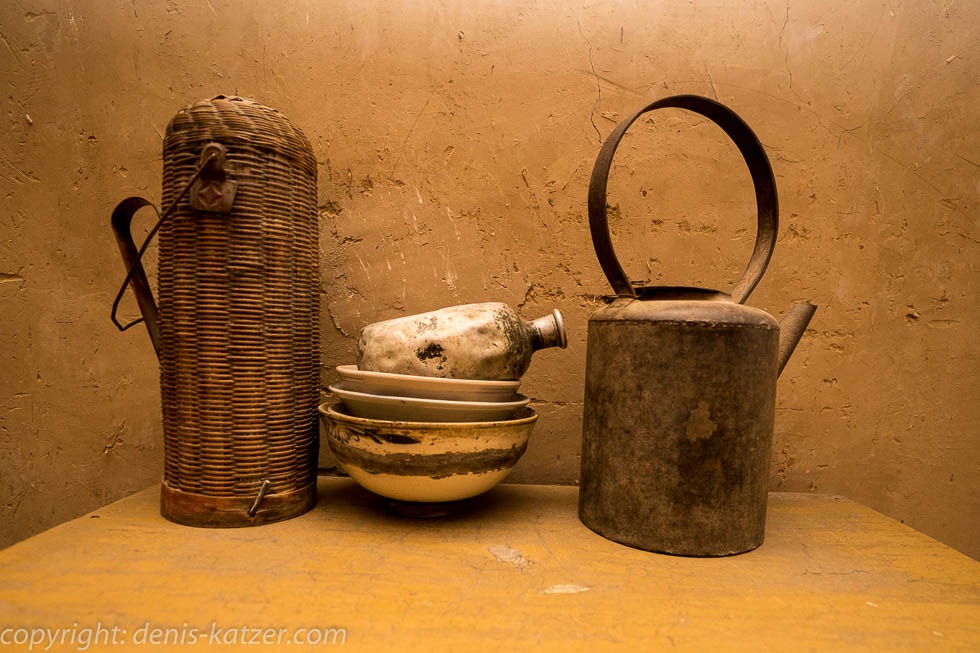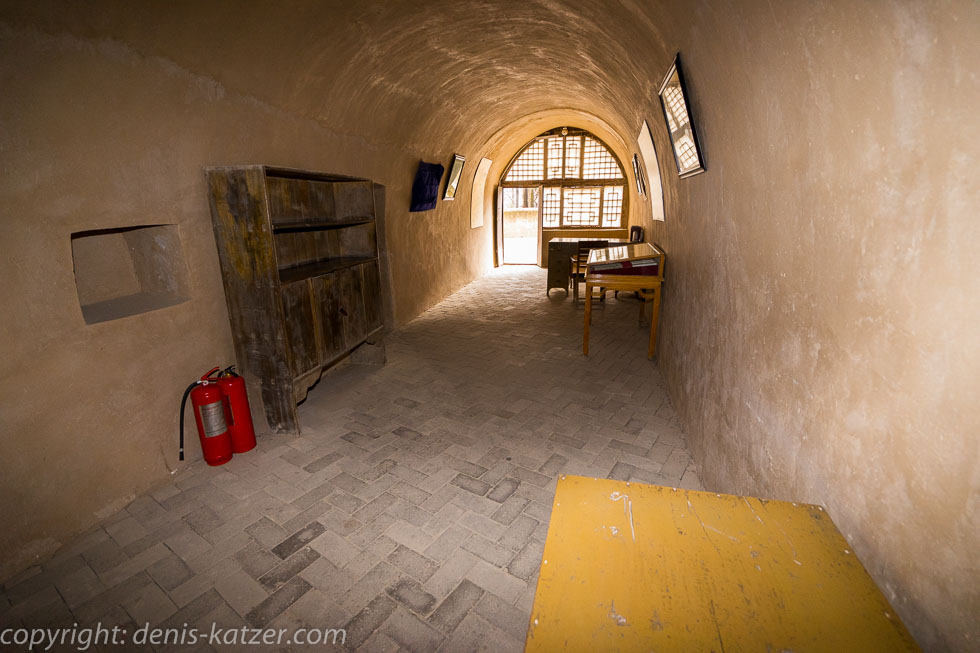
In the caves of the foundation of power
N 36°35'0.79'' E 109°29'28.0''
Date:
24.11.2015 to 25.11.2015
Day: 149-150
Country:
China
Province:
Shaanxi
Location:
Yanan
Latitude N:
36°37’31.1”
Longitude E:
109°25’20.0”
Total kilometers:
11,010 km
Maximum height:
1.100 m
Total altitude meters:
10.983 m
Sunrise:
07:27 am to 07:28 am
Sunset:
5:29 pm
Temperature day max:
7 °C
Temperature day min:
minus 4 °C
(Photos of the diary entry can be found at the end of the text).
It is a strange feeling to stand in the cave dwelling where Mao Zedong, who later became President of the People’s Republic of China, took refuge after his long march. China, shaken by petty wars, was the harbinger of the great Chinese civil war that began in 1927 and ended in 1949. During this Chinese civil war in 1934, the threatened army of the Chinese Communist Party under the leadership of Mao Zedong retreated before Chian Kai-Shek’s 500,000-strong force. Through this escape, which later went down in Chinese history as the Long March, Mao, his officers and soldiers saved themselves from the inevitable encirclement that was imminent. Within 370 days and 12,500 kilometers, Mao’s troops crossed impassable terrain. On their way, they looted the property and weapons of local warlords. They brought in small farmers and poor, destitute citizens to replace the soldiers who were constantly dying off due to exhaustion, illness, malnutrition, desertion and military losses.
Nevertheless, only 7,000 of the 90,000 soldiers reached Yan’an. According to tradition, the strong Mao Zedong had himself carried almost the entire distance in a sedan chair specially constructed for him. Who knows how many of its wearers lost their lives in the process.
In the remote, inaccessible mountains around Yan’an, the small band of a former army was reasonably safe from its pursuers. Mao, who later became President of the People’s Republic of China, his right-hand man Zhou Enlai, Prime Minister of the People’s Republic of China from 1949 to 1976, Zhu De, Commander-in-Chief of the Chinese People’s Liberation Army, and the entire Communist leadership at the time used this place as their headquarters between 1935 and 1948, where they reorganized and strengthened themselves.
The room, dug into the loess, looks sober and simple. I am standing in front of a simple wooden desk at which the man is consciously or unconsciously working to usurp the absolute power of China. Surely no one would have dreamed at the time that a man was sitting here who, in the course of his life, had been mainly responsible for the deaths of up to 76 million compatriots through appalling wrong decisions and a thirst for power. No one would have believed that he would mock all those who would one day call him a dictator with the words: “The Yellow Emperor Qinshihuang, who lived 2000 years ago, had 406 Confucian scholars buried alive. We have buried several hundred thousand counter-revolutionaries. More than 46,000 intellectuals were among them. Those who call me a qinshihuang are right. But I am a hundred times worse.”
Li Rui was a party member for 67 years, ex-vice minister and Central Committee member and for a short time secretary to Mao Zedong. According to his statement, Mao boasted: “I am the Yellow Emperor and Marx in one person.”
Who would have thought back then that the Chinese Communist Party, the CCP, which was founded in 1929, would still wield absolute power 86 years later. That this party would have over 78 million members in 2015, making it by far the largest communist party of the 21st century and the second largest political party in the world.
Who cares today that, according to Mao’s own statements, 40 percent of the party’s funding came from large-scale poppy cultivation and thus from the drug trade.
During a revolution, apparently all means are good, even if countless people die from drugs, I think to myself and look at the picture of Mao sitting at his desk and practising calligraphy. I stand in front of it and simply cannot understand why so many people in China still worship a man who tortured his entire people, killed a considerable number of them and whose indescribable crimes have traumatized many families to this day. Only a few dare to talk about it. Only a few survivors of the persecution at the time go public with their knowledge.
It is a mystery to me why hundreds of thousands of Chinese tourists still allow themselves to be photographed in front of the pictures and statues of a mass murderer steeped in history. Have they forgotten how the generations of the 20th century suffered under this man? Have they forgotten the indescribable suffering this man has brought upon the country and its people?
- According to the American political scientist Rudolph Joseph Rummel, 8,427,000 people died between 1949 and 1953, during the period of consolidation of power and expropriations carried out by the party.
- The Great Leap Forward (1958-1961) was another campaign by Mao to catapult his country into a major industrial power as quickly as possible. The result of this ill-considered action triggered the greatest famine in human history, which is estimated to have claimed up to 45 million lives.
- In 1966, Mao launched the Great Proletarian Cultural Revolution in which he called on children and young people to denounce their parents as counter-revolutionaries and right-wing deviants. As a result, they skipped school and university. They destroyed cultural monuments, temples, libraries and museums over a period of ten years. The young people rose above life and death and abused masses of people, killing many. They were not afraid to betray their own parents, who were then beaten, tortured, banished and sometimes even killed. Teachers, doctors, artists, monks and politicians in particular were persecuted, sometimes to the point of death. The result was the lasting destruction of China’s ancient culture and around 7,731,000 deaths.
- Scientists estimate the total number of victims under Mao Zedong’s leadership at up to 76 million.
The amazing thing for me is that it was only after Mao’s death in 1976 that this terrible Cultural Revolution was officially ended. It is also difficult to understand that such a person, according to Time magazine, manages to be named one of the 100 most important people of the 20th century, or that the communist Mao, who would have liked to abolish money, is today regarded as the god of money and his likeness looks out at us from the one-yuan bill to the highest 100-yuan note.
I stand in this damp rocky cave, look at Mao’s bookshelf, the thermos flask, bowls and the simple light bulb that illuminates this room and feel my hair stand on end. That was not all that long ago. An age in which dictators scourged humanity in unbelievable ways and killed their people. This terrible list of dictators is headed by Mao Zedong who, according to this list, is held responsible for the deaths of 77,692,000 people, followed by Josef Stalin, who had 42,672,000 people on his conscience, and then Adolf Hitler, who was responsible for 20,946,000 deaths. Then comes Mao’s adversary Chiang Kai-Shek with 10,214,000 dead, Vladimir Lenin with 4,017,000 dead, Hideki Tojo with 3,990,000 dead, the former monk Pol Pot with 3,000,000 dead and so on.
Confused, thoughtful and confused, we leave the former headquarters of the CCP, the Chinese Communist Party. On the way back to our accommodation we hardly speak and let our minds wander…
(Some of the victims of the Cultural Revolution were later compensated and rehabilitated by the CCP. This issue is certainly far from over. Just as Germany had a lot to come to terms with after the Second World War and still has to do so today, many countries in which injustice was committed are still coming to terms with the past).
The live coverage is supported by the companies Gesat GmbH: www.gesat.com and roda computer GmbH www.roda-computer.com The satellite telephone Explorer 300 from Gesat and the rugged notebook Pegasus RP9 from Roda are the pillars of the transmission.

